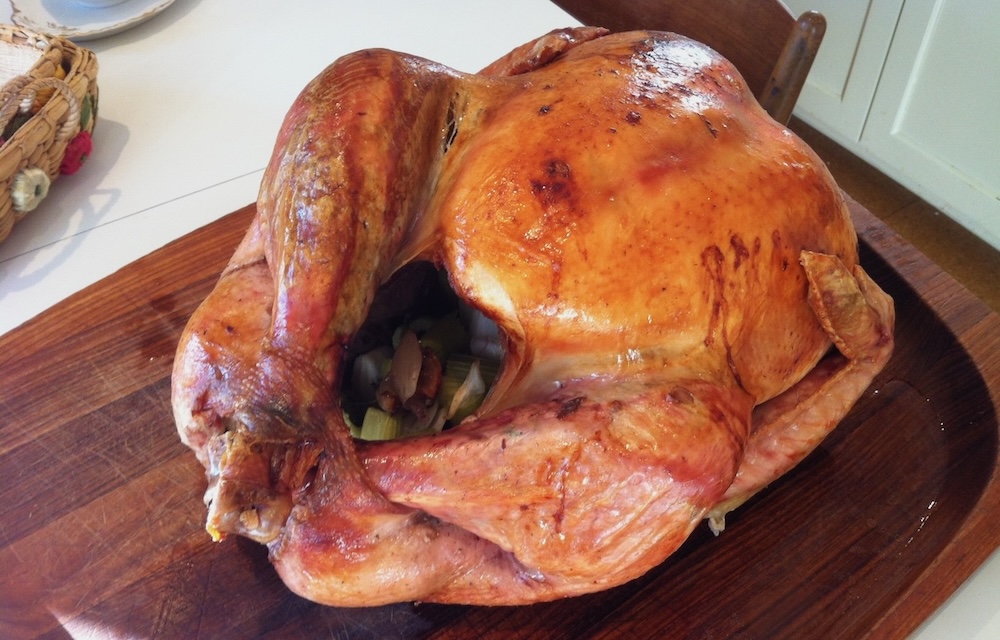Do You Have an IAQ Plan for Thanksgiving?

So you’ve got a bunch of people showing up this week to spend a day or two or three with you. In a perfect world, no one brings any illnesses with them to the party. But what if they do have something contagious that spreads through the air? And what’s your plan to keep good indoor air quality? Let’s do a quick reminder here about the kinds of things to worry about and what you can do to help.
Indoor air pollutants
When people breathe, cough, sneeze, talk, or laugh, they expel particles into the air. If someone has a cold, the flu, or COVID, those particles can carry pathogens to other people and make them sick. The good news here is that particles are relatively easy to remove from the air. We can catch them with good filters. In the case of sick people, we can remove them at the source with masks.
Another type of particle common to indoor air is the really small stuff called PM2.5. That stands for particulate matter that’s 2.5 microns or smaller. It could be some of the stuff that comes out of a person’s mouth or nose. But it also comes from cooking, outdoor air, and other sources.
Then there’s other important class of pollutant: gases. And one of the biggies at Thanksgiving is carbon monoxide. It’s a product of incomplete combustion. If you have a gas oven, it’s likely you’ll get carbon monoxide in your indoor air when you bake that turkey or stuffing or pumpkin cheesecake.

There are a lot of potential indoor air pollutants, but those are some of the most important to be concerned with for Thanksgiving.
A layered approach to IAQ
Here’s a quick review of the measures you can take to achieve good indoor air quality.
- Source control. Keep bad stuff out of the house. That could be telling your sick relative to stay home. Or maybe it means deep frying the turkey in the backyard instead of baking it in the oven.
- Ventilation. Run the kitchen range hood. Run the bath fans. Open the windows if the weather’s nice enough. Get some air changes to dilute the indoor pollutants. (Of course, that assumes your outdoor air is better than the indoor air.)
- Filtration. Ideally, you have a heating and cooling system that can handle high efficiency filtration. If not, use portable filtration, like the Corsi-Rosenthal box or a commercial HEPA air cleaner.
- Airtightness. Controlling the movement of air pollutants across the building enclosure is generally a really good way to maintain good IAQ. But this time of year, you may want more air movement for ventilation purposes. You just don’t want it coming from places like the garage or a moldy crawl space.
- Moisture control. This is another one that’s really important overall but maybe not as much for Thanksgiving. Materials that get wet and stay wet can grow mold. Mold is bad for indoor air quality. But, depending on where you are, mold problems may be waning now with cooler temperatures and drier air.
- Pressure balancing. This one’s a bit more subtle than the others. If you have a forced-air heating and cooling system, you want to make sure it doesn’t create big pressure differences inside your home. For example, if the bedrooms get conditioned air but don’t have pathways to return that air to the system, you get positive pressure in the bedrooms. That means you get negative pressure where the return vent is. Those pressure differences can drive infiltration (and its companion, exfiltration). The negative pressure also could backdraft a water heater and put carbon monoxide in your air.
See my previous article on the layered approach to IAQ for more.
Your best bets
Here are the best things you can do to clear the air over Thanksgiving.
- Ventilate! Run the range hood. Run the bath fans. If you’re lucky enough to have a whole-house ventilation system, ramp up the ventilation rate. Open the windows if the weather is nice enough.
- Set your thermostat to keep the fan running continuously. This may not apply if you’re in a humid climate and still having high humidity. But if you can do it, it’ll keep the air circulating. It will run that air across the filter, removing some of the pollutants.
- Use portable filtration. If you don’t have one yet, make a Corsi-Rosenthal box. Or get a standalone air cleaner that uses filtration. (Avoid electronic air cleaners that rely on ionization, oxidation, and ozone.)
- Monitor your indoor carbon monoxide. If it’s all you have access to, make sure you have a regular carbon monoxide detector or two or three. Ideally, though, you have—or can get quickly—a low-level carbon monoxide monitor. Be sure to read my article on carbon monoxide if you don’t know why.
I hope you have a healthy, safe, and happy Thanksgiving!
Allison A. Bailes III, PhD is a speaker, writer, building science consultant, and the founder of Energy Vanguard in Decatur, Georgia. He has a doctorate in physics and is the author of a bestselling book on building science. He also writes the Energy Vanguard Blog. For more updates, you can follow Allison on LinkedIn and subscribe to Energy Vanguard’s weekly newsletter and YouTube channel.
Related Articles
A Layered Approach to Indoor Air Quality
Don’t Compromise — Get a Low-Level Carbon Monoxide Monitor
3 Ways to Get Cleaner Indoor Air With Filtration
Which Indoor Air Pollutants Matter Most?
The 2 Main Problems With Kitchen Ventilation
Love Is More Important Than Building Science — A Thanksgiving Story
Comments are welcome and moderated. Your comment will appear below after approval. To control spam, we close comments after one year.

This Post Has 0 Comments